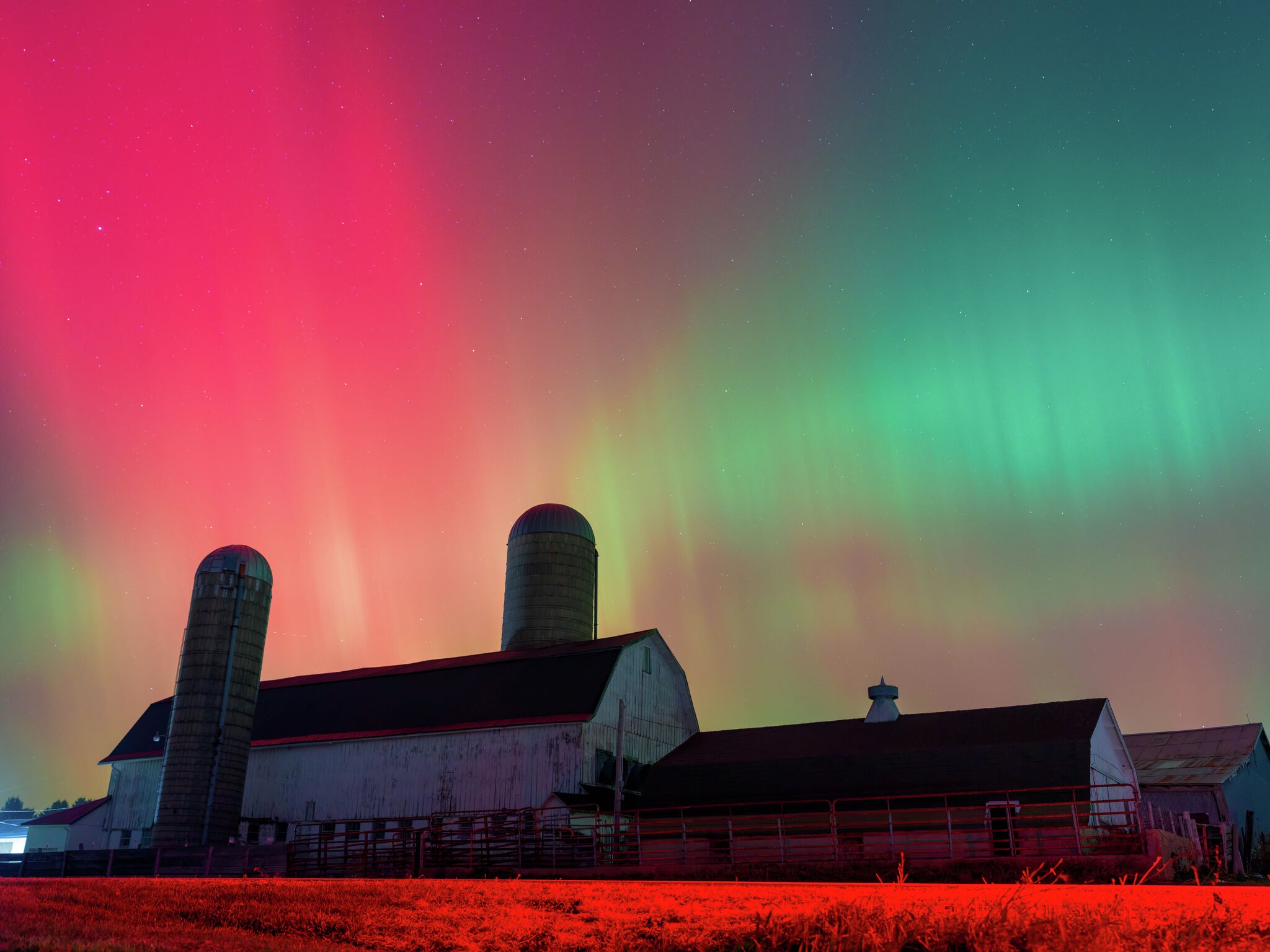news
Northern lights visible in Austin Tuesday night: Photos capture views
Here's how geomagnetic storms create the aurora borealis and its bold colors in night skies.
Published November 12, 2025 at 3:30pm by Alexis Simmerman

The aurora borealis lights up the night sky over Monroe, Wisconsin, on Nov. 11, 2025, during one of the strongest solar storms in decades. The geomagnetic event pushes the northern lights deep into the continental United States, with vibrant pink, red and green hues illuminating rural farmsteads and open fields across the Midwest and as far south as Texas.
Ross Harried/NurPhoto via Getty Images
Several states, including Texas, were gifted stunning views of the northern lights Tuesday night. Visibility occurred earlier than initially predicted, and at least 21 states had the potential to see the phenomenon thanks to a powerful geomagnetic storm.
Central Texas shared photos of the northern lights on social media.
What causes the northern lights?
The aurora borealis appears in the sky when charged particles from the sun interact with Earth's magnetic field and atmosphere. The sun emitted a series of flare-ups, called coronal mass ejections (CMEs), between Oct. 11 and Oct. 13, per the Space Weather Prediction Center. Upon reaching Earth, the particles are channeled toward the polar regions by the planet's magnetic field — the field lines meet at the magnetic poles, which is why the northern lights are most visible in the northernmost region of the Northern Hemisphere.
When the particles from the sun hit Earth's upper atmosphere, they collide with gas atoms and molecules like oxygen and nitrogen. The collisions temporarily excite the atoms and raise their energy levels. As auroras form, Earth’s magnetic field redirects the particles toward the poles through a process that produces a stunning display of rays, spirals and flickers that have fascinated humans for millennia. Whether hues of green, red, blue and even pink dance about in the sky depends on the altitude where the collisions occur, as well as the composition and density of the atmosphere at the time.
Combinations of gas and altitude result in the following colors:
- Green: oxygen around 100 to 300 kilometers above Earth
- Red: oxygen above 300 kilometers
- Purple/Pink: nitrogen molecules
- Blue: nitrogen at lower altitudes
This phenomenon also occurs on the Southern Hemisphere; the southern lights are also called the aurora australis.
How do geomagnetic storms impact Earth?
While we won’t notice weaker solar activity, a geomagnetic storm may cause temporary disruptions to technology and electronic communications, but no major impacts are expected — except for the dazzling display of the northern lights.
Fortunately, Earth is shielded by its magnetic field, an invisible barrier that protects us from solar winds. When strong solar particles interact with gases in the atmosphere near the magnetic poles, they produce the vibrant colors of the auroras.

